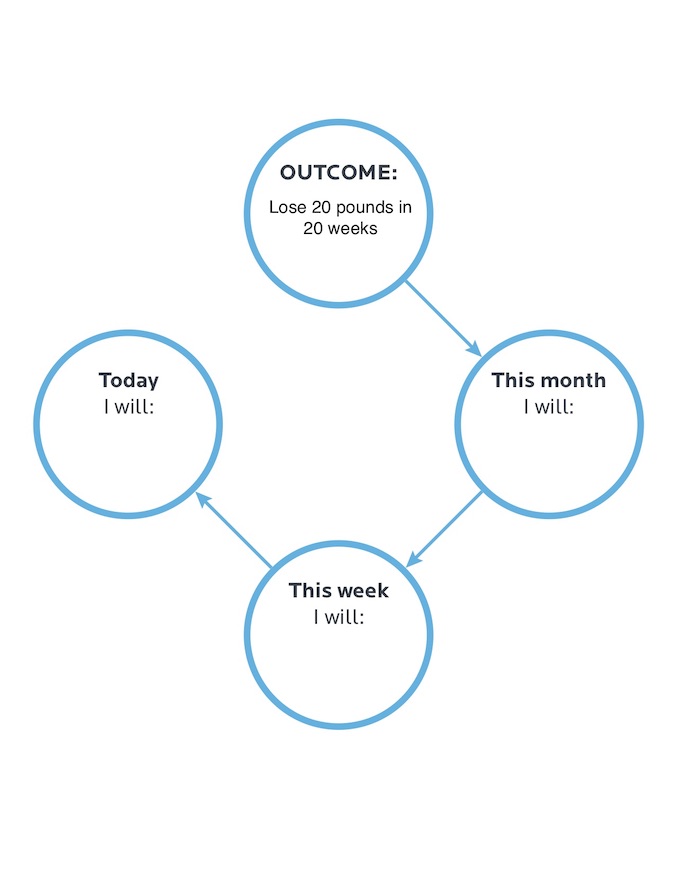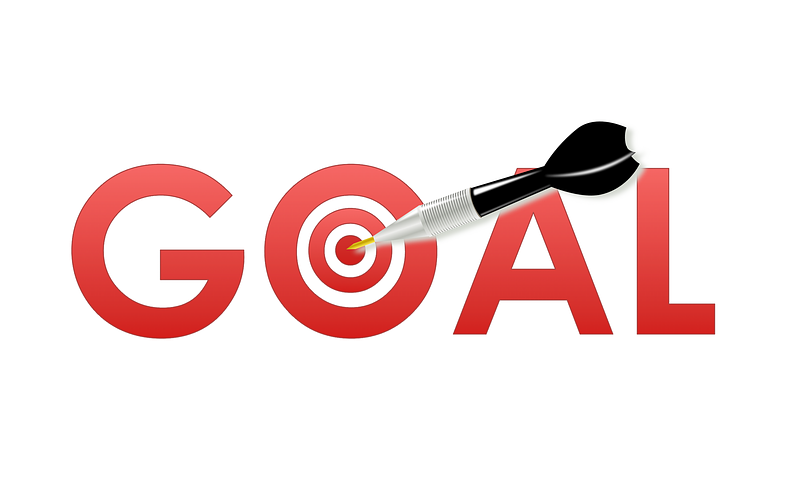I wrote this series of articles because I keep seeing the same thing happen over and over again. Well-meaning individuals attempting to achieve some health and/or fitness-related goal, and in the end either coming up short or quitting entirely, and I want to help.
If you happen to be starting here, please go back and read part 1, part 2, and part 3. There are some very good reasons why I didn’t just start here in the first place. Today I’m going to talk about the final piece of the puzzle – the actual process of setting goals.
Research tells us that goals must have the following five characteristics:
- Goals are put down in writing. Something magical happens when something is written down and recorded; it goes from being just a wish or a dream to that of an actual goal.
- Goals are specific and measurable. Losing weight and getting healthier are not goals, but rather vague notions. Losing 20 pounds of fat and achieving fasting blood glucose levels under 100 mg/dL are goals. If you can’t measure or specifically state what you want, then it’s not a goal.
- Goals have a specific timeline. Timelines make goals more real. Without some sort of deadline, you’re still just wishing and hoping they come true at some point in your life.
- Goals are realistic. This at times can be tricky. While some are good at finding this “sweet spot”, just as many overestimate and underestimate what they are capable of doing. Having a coach can objectively help you determine what is and is not realistic.
- Goals MUST be personally significant. I have already discussed this in length in previous articles and will even go so far as to say this is the most important of the five. Without some deeper meaning attached to your goal, it’s unlikely to happen.
While there are several types of goals worthy of discussion – those being outcome, behavior, avoid, approach, performance, and mastery goals; I’m going to focus on the two I feel are the most relevant – outcome and behavior goals.
An outcome goal is the main outcome or objective that one hopes to accomplish.
For example, “I want to lose 20 pounds over the next 20 weeks” is an outcome goal. It’s definitely specific and measurable and follows a specific timeline. We’ll also assume that it is realistic for this individual, they have put it down in writing, and that they have identified their “deeper” meaning behind this particular goal.
Perfect.
Once we have the outcome goal identified, I then recommend the individual set it aside and forget about it. Just put it out of your mind for the time being.
Why you ask? One of the key characteristics of an outcome goal is the fact that you can’t directly control the accomplishment of the goal. It represents the end result of a series of other things you need to do.
Let’s use the above as an example.
Losing 20 pounds will most likely entail specifically losing 20 pounds of fat. To lose 20 pounds of fat, fat needs to leave fat cells. No matter how hard you try, the exact activity of your fat cells is out of your control. You can’t control precisely when or how fast this happens. It will happen over time when the conditions are right.
However, while you can’t control the outcome, you can control the steps and process behind it, or the behaviors necessary for the outcome to take place. This leads me to the importance of behavior goals.
Behavior goals are the process, actions, steps, and/or behaviors you have to take in order to progress towards and accomplish your outcome goal. The key characteristic of a behavior goal is that you can directly control the goal. It’s an action you can choose to do every day (or not).
In other words, while you can’t control the physiology of your fat cells, you can control what you eat. If you’ve ever heard the advice “only worry about what you can control and forget about the rest” – it applies perfectly during this process of goal setting.
Given our losing 20 pounds in 20 weeks scenario, some related behavior goals might include: “I will eat 1-2 servings of vegetables at each meal for the next week” or “I will exercise five times a week for at least 30 minutes for the next 4 weeks.
In my world, with the clients that I work with, their outcome goals tend to be longer-term goals… like 6 – 12 months. Let me tell you, that’s a long time for your head NOT to get in your way and discourage you.
When you only focus on the outcome, this is precisely what happens. It is for this reason I see so many simply give up and quit.
However, when a client has a series of well-thought-out and planned behavior goals that are constantly evolving over time, they continue to experience daily, weekly, and monthly wins.
These “little” wins not only keep one engaged and motivated when times get tough but eventually are likely to add up to a major victory and achievement of the outcome goal.
When establishing behavior goals with my clients I like to use the 4 Circles Exercise. To use it yourself, simply start with your outcome goal and then work backward by coming up with 1 behavior-related goal you will accomplish this month, this week, and then today. The idea is to get you one step closer to your outcome each day.

Think back to a time where you set a big outcome goal for yourself that you did not achieve. Now ask yourself, did you have any clearly defined behavior goals associated with it? If not, were you just winging it and hoping for the best?
My next question would be…how did that work out for you?
There’s nothing wrong with setting big outcome goals for ourselves. The danger is sometimes they can seem so big and daunting that we don’t know where to begin. Then we think about it, and think about it some more to where one of three things usually happens:
We either run out of energy doing all this “thinking”, we come up with enough reasons why it can’t be done, and/or we never even start in the first place! All things that could have been avoided with a series of behavior goals and a plan.
If achieving health and fitness-related goals has been a problem for you in the past, I highly encourage you to try the 4 circles approach where you break it down into long-term, medium, short, and daily goals.
If every day you focus on and do 1 thing or action that gets you 1 step closer to your ultimate goal, you create and maintain forward momentum. Continued forward momentum leads to little wins. Little wins help you stay engaged and motivated, and when you stay engaged and motivated, you give yourself the chance to succeed.

